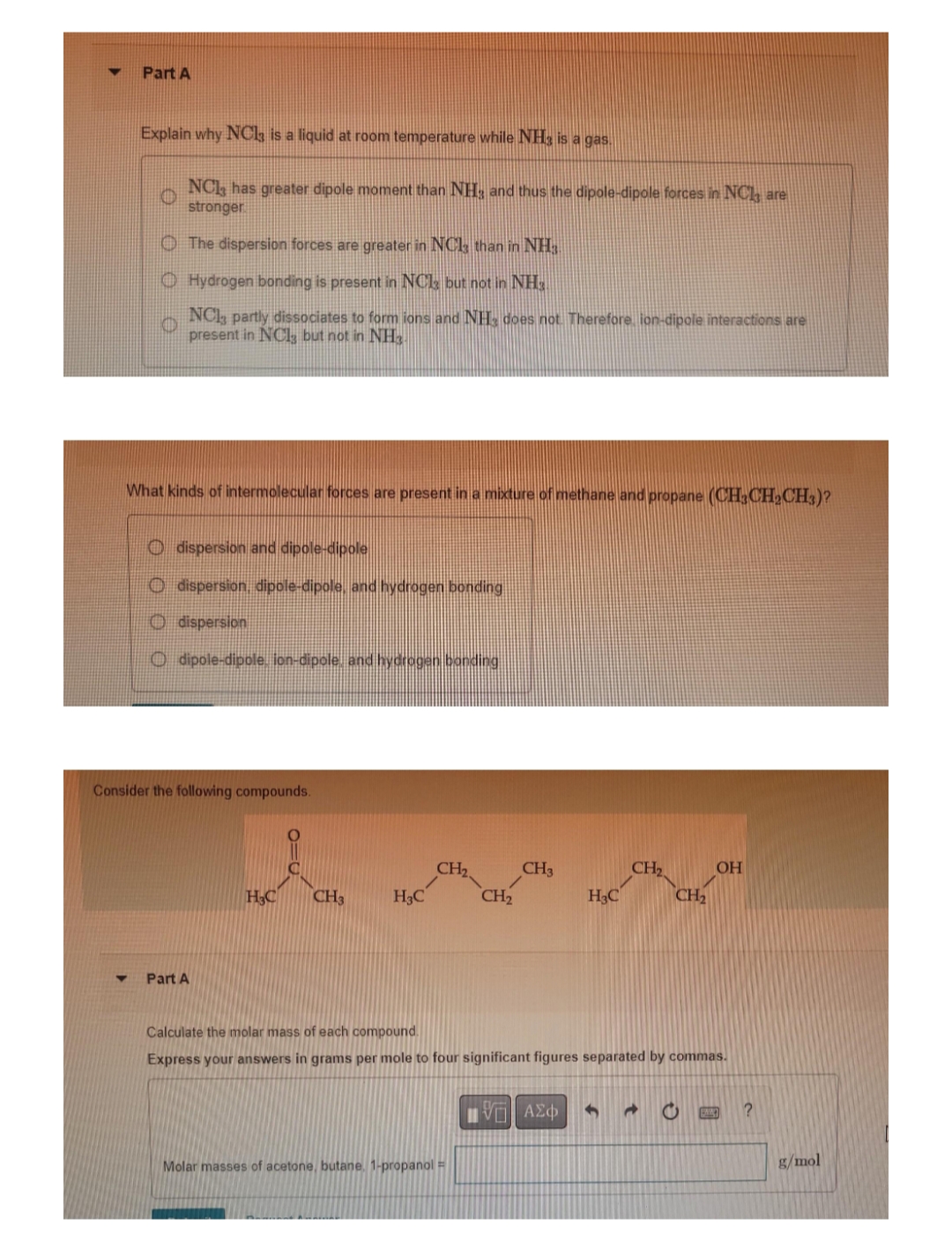Part A Explain why NC is a liquid at room temperature while NH3 is a gas. NC has greater dipole moment than NH, and thus the dipole-dipole forces in NC are stronger The dispersion forces are greater in NC1s than in NH Hydrogen bonding is present in NC1, but not in NH O NCI, partly dissociates to form ions and NH, does not. Therefore, ion-dipole interactions are present in NC1, but not in NH3. What kinds of intermolecular forces are present in a mixture of methane and propane (CH3CH₂CH3)? Odispersion and dipole-dipole Odispersion, dipole-dipole, and hydrogen bonding Odispersion Odipole-dipole, ion-dipole, and hydrogen bonding Consider the following compounds. H₂C CH3 H3C CH₂ CH₂ CH3 H₂C CH₂ CH₂ OH
States of Matter
The substance that constitutes everything in the universe is known as matter. Matter comprises atoms which in turn are composed of electrons, protons, and neutrons. Different atoms combine together to give rise to molecules that act as a foundation for all kinds of substances. There are five states of matter based on their energies of attraction, namely solid, liquid, gases, plasma, and BEC (Bose-Einstein condensates).
Chemical Reactions and Equations
When a chemical species is transformed into another chemical species it is said to have undergone a chemical reaction. It consists of breaking existing bonds and forming new bonds by changing the position of electrons. These reactions are best explained using a chemical equation.
plz do all of this , very easy question , dont do incomplete if u plan to give only 1 then skip some other will do all as these are very easy plzz do all or else skip

Trending now
This is a popular solution!
Step by step
Solved in 2 steps with 2 images









